How to properly wash dishes in a dishwasher?
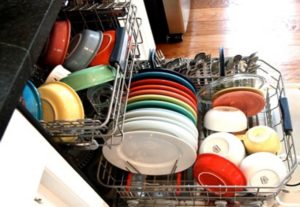 In Russia, dishwashers are becoming increasingly popular. However, there are still supporters that it is better to wash dishes by hand; in their opinion, it is both more economical and safer. However, many do not agree with them. If you wash dishes in the dishwasher correctly, the results will exceed all expectations!
In Russia, dishwashers are becoming increasingly popular. However, there are still supporters that it is better to wash dishes by hand; in their opinion, it is both more economical and safer. However, many do not agree with them. If you wash dishes in the dishwasher correctly, the results will exceed all expectations!
Let's look at the kits
To ensure that the dishes are washed thoroughly, without anything breaking, breaking or bending, you need to load the dishwasher correctly. But users who have recently purchased a PM often have difficulty loading the dish basket. What should I put in which compartment? What to do if the dishes don’t fit in the compartments?
The main thing to remember is that you cannot overload the basket! There is a high probability that after such a water procedure, the cutlery will have to be washed or washed manually, but then what is the use of PM?
In fact, it's simple! Focus on kits. The set consists of several types of plates, a mug, a fork, a spoon and a knife for a person. This is a standard set, but sets may vary. This information should be indicated in the instructions for the dishwasher. See what the set consists of and how many sets the basket can hold. If it is 4, then do not load, for example, more than 4 soup bowls, etc.
If you need to wash something that goes beyond the scope, for example, a ladle or something else, wash it separately from other dishes so that there is no overload or other unpleasant consequences.
Particular attention to the placement of dishes
The standard dishwasher model consists of two baskets: upper and lower, as well as a special tray for small cutlery, which is included as an additional part and is installed by the user for washing independently.
So, you opened the dishwasher and see two shelves for loading dishes. Please know that the bottom one is intended for large work utensils, such as frying pans, pots, large dishes, etc. The upper one, in turn, holds ordinary plates and cups from which we eat and drink. How to download all this correctly? Place the largest items on the sides, and the smaller ones in the center. Place the tray with forks, knives and spoons in the middle of the bottom shelf.
To avoid poor rinsing, make sure that all cups, mugs and other items with indentations are placed upside down in the machine, as water flows from the bottom up. If you place the cup bottom down, it will only wash the outside, but the inside will remain dirty. You should also not place the mugs on their sides, as the detergent will remain inside, and the device will have to be washed manually later.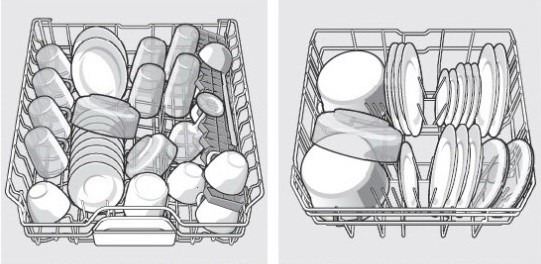
In order not to interfere with the internal parts of the dishwasher working smoothly, all handles of frying pans, pots, and cups should not be directed vertically, otherwise the unit will simply break.
If you see that the dishes are very dirty and you are afraid that they will not be washed well, it is better to carry out the procedure in two steps: place all the items in one cell so that there is more free space between the devices, then they will be washed better.
Items not suitable for dishwasher
In the instructions for your dishwasher, you can find clear instructions about which items can be washed in the machine, which cannot, and which are possible, but not advisable.As a rule, the items in this list are relevant for any model. Here is something that is absolutely not suitable for PM:
- dishes with damage, obvious or hidden;
- wooden items, including knives with wooden handles, cutting boards and the like;
- items subject to rust. As a rule, these are dishes made of alloys based on copper and tin;
- glass and plastic dishes.
But the fact is that you can wash it in the dishwasher, but you shouldn’t abuse it unless absolutely necessary.
- Dishes made of silver and aluminum.
- Faience.
- Crystal.
You can regularly “wash” such materials in a washing machine only if your unit is equipped with special programs and modes, and a special narrow-profile detergent has been selected.
After washing, wait about 15-20 minutes before removing the dishes. Otherwise, you risk getting burned or breaking the appliance, since immediately after the end of the cycle the dishes are still too hot.
Also, do not forget that a dishwasher and a washing machine are completely different things. Do not confuse one with the other, otherwise you risk damaging the unit by washing a towel in it, for example.
Pay attention to program selection
Do not also forget that different materials and types of dishes require different washing parameters. For example, there is a mode with a high temperature - up to 75 degrees, and there is, on the contrary, a low temperature (30-40 degrees), it is intended for washing fragile crystal dishes.
Some models are equipped with a pre-soaking function, but purely economically this is not at all profitable. A lot of water and electricity will be wasted. Instead, simply use a fork or knife to remove any leftover food from your dishes and soak your pots and pans for a few minutes in the sink yourself. Believe me, you will save a lot!
The default wash cycle includes: pre-wash, main wash, rinse and dry. In this case, the procedure is carried out with high temperatures of water and air, which is unacceptable for some types of dishes.
It is important to know what to wash dishes with
All dishwasher detergents are divided into three types: powder, tablets and capsules. The most common product is powder, which is poured into a special compartment. One tablespoon is enough.
Tablets and capsules are convenient because they contain not only the detergent itself, but also a rinse aid, and sometimes regenerating salt. This way you don't have to buy additional attributes. The main thing is that the dishwasher has a built-in compartment for tablets.
Important! Tablets must be used correctly. Do not combine them with quick wash programs. The substance will not have time to dissolve and be washed out of the dishes. It turns out that the product is used practically in vain, and this is uneconomical!
Strongly alkaline detergents are used to wash fragile dishes. They contain special enzymes that break down proteins, fats, polysaccharides, in short, everything that creates visible dirt on dishes.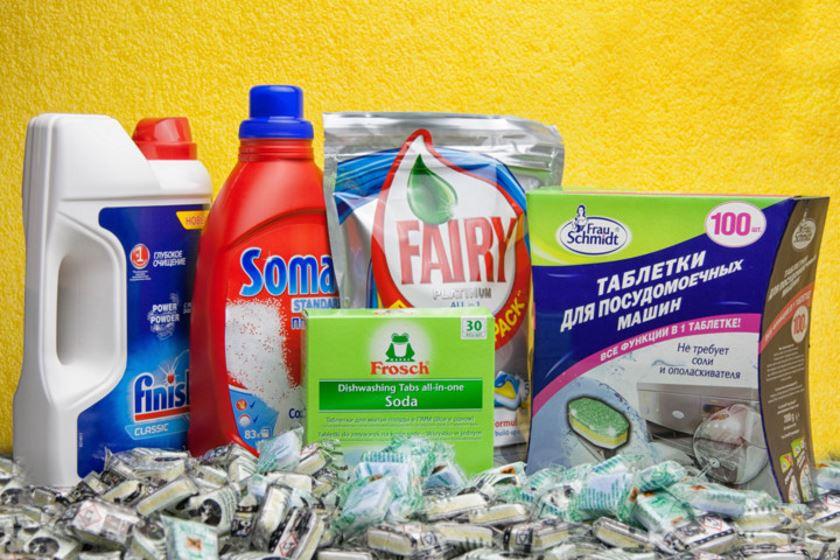
Low alkaline detergents are standard and suitable for any type of cookware. However, any such product must be used in parallel with the rinse aid. Otherwise, traces of enzymes will remain on the dishes, which are dangerous to human health even in small quantities. One bottle of rinse aid is usually enough for 10-12 washes.
And remember: an increased dose of detergent does not contribute to better quality of the procedure. It's quite the opposite.Also, never add conventional detergents for manual dishwashing to the detergent; there will be no effect, and a lot of foam is formed, which can harm the equipment.
Much depends on water quality
Regenerating salt has already been mentioned above. It is used to soften water. After all, the harder the water, the more stains remain on the dishes and the less attractive they look.
In addition, the dishwasher is not immune to the same problems that befall washing machines: the formation of scale and limescale on internal parts when regularly washed with hard water. Regenerating salt will help extend the service life of your unit.
Clean your “home assistant”
To make your machine last as long as possible, try to do the following from time to time:
- clean the filter (preferably after every thorough wash);
- wash loading baskets;
- After 15-20 cycles, pour degreaser into the machine. It will remove the fat that has settled on the internal parts of the device.
It won’t hurt to periodically run the cycle without dishes by pouring citric acid or anti-scale into the machine. The procedure can be repeated not often: once every 3-4 years is enough.
Interesting:
Reader comments
- Share your opinion - leave a comment

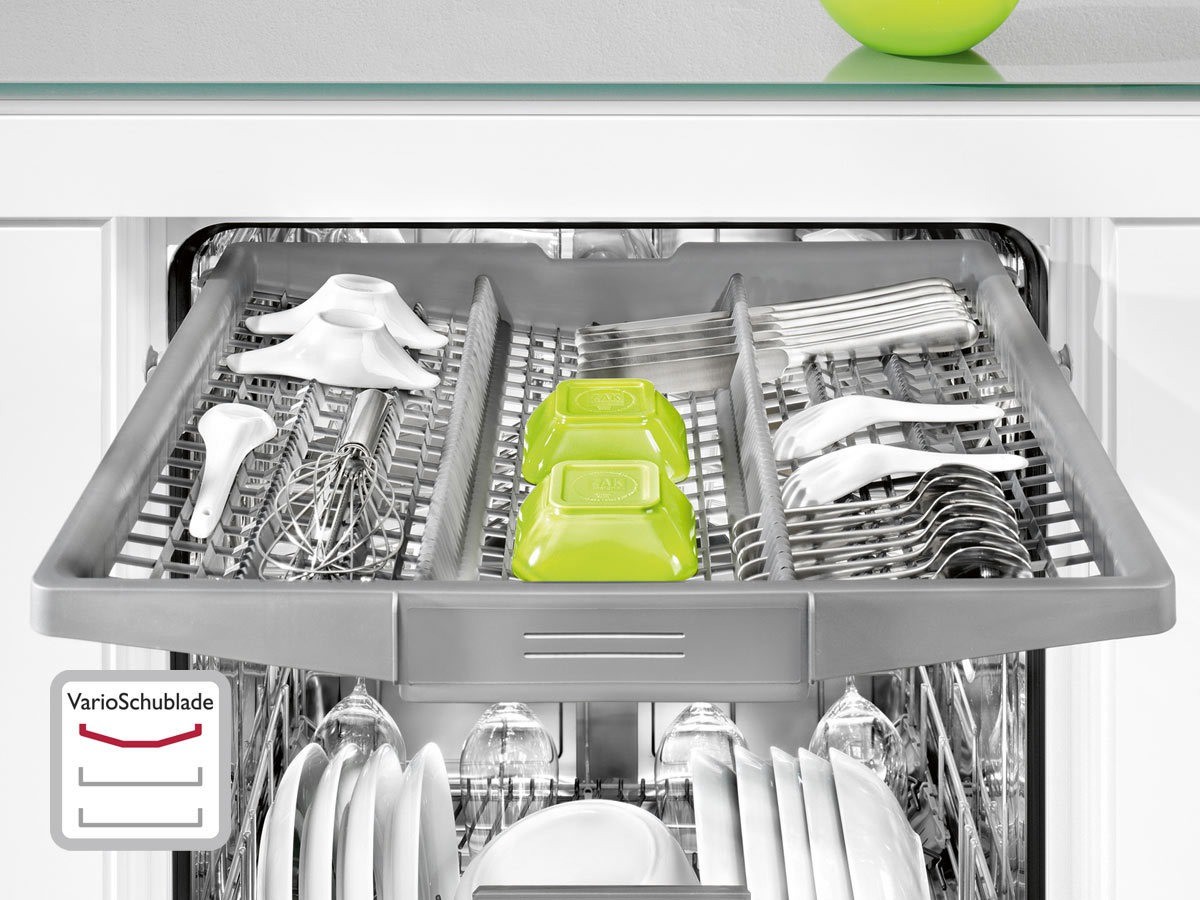
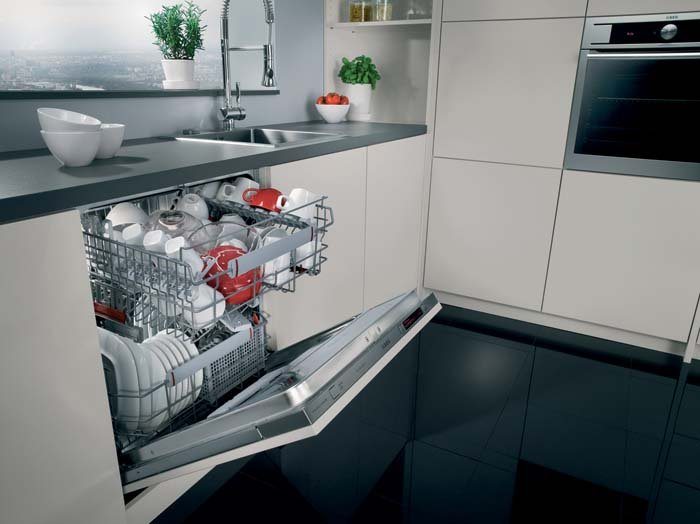


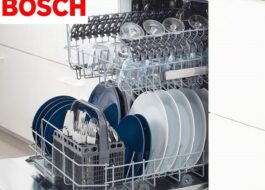















Add a comment